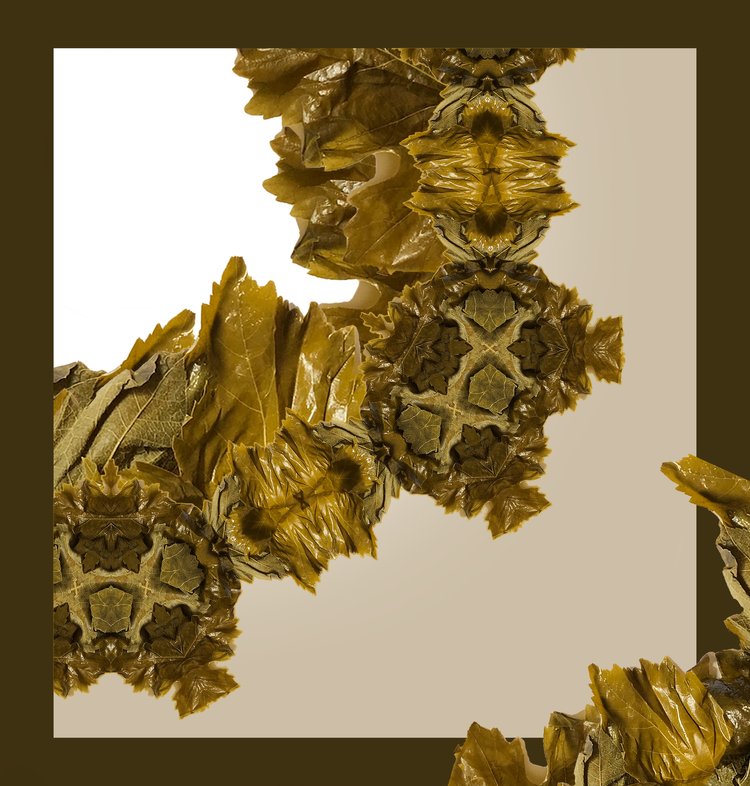Grief Houses
2021
Grief Houses is a series that discusses cultural violation, loss of love and memory. Focusing on death and decay, I explore the subjects of Egyptian tomb reveals and how communities decide what constitutes care for them amidst the Detroit housing crisis. Plaster casts of my body reference how land and home enter your blood streams in similar ways that your ancestors DNA does. We live with the choices of government and capitalism that desensitize us to the loss of home and body. Honor, respect and grief are removed and replaced by economic gain. Grief houses is a series of prints on fabric, paintings on wood and plaster casts. This series is a funeral.
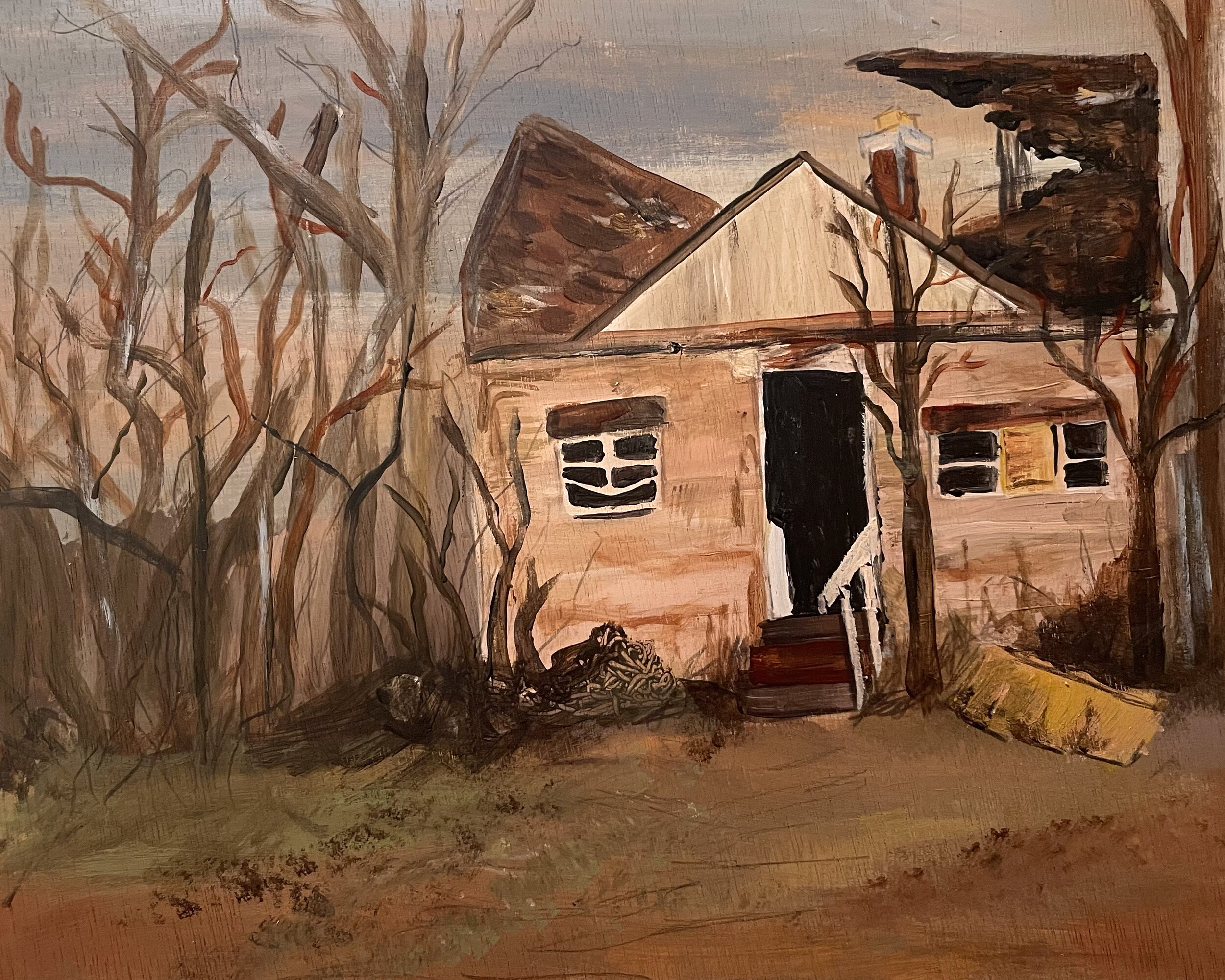
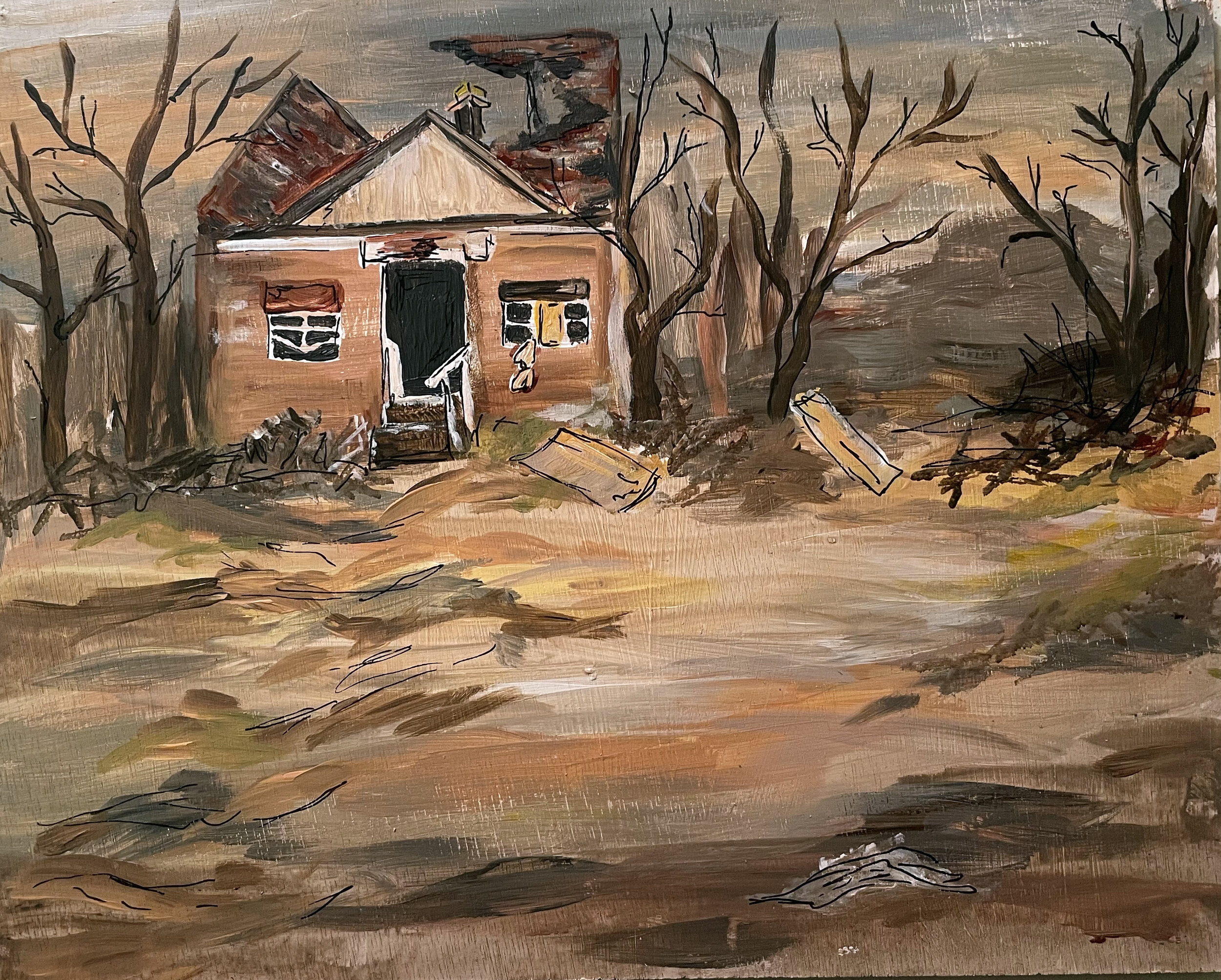
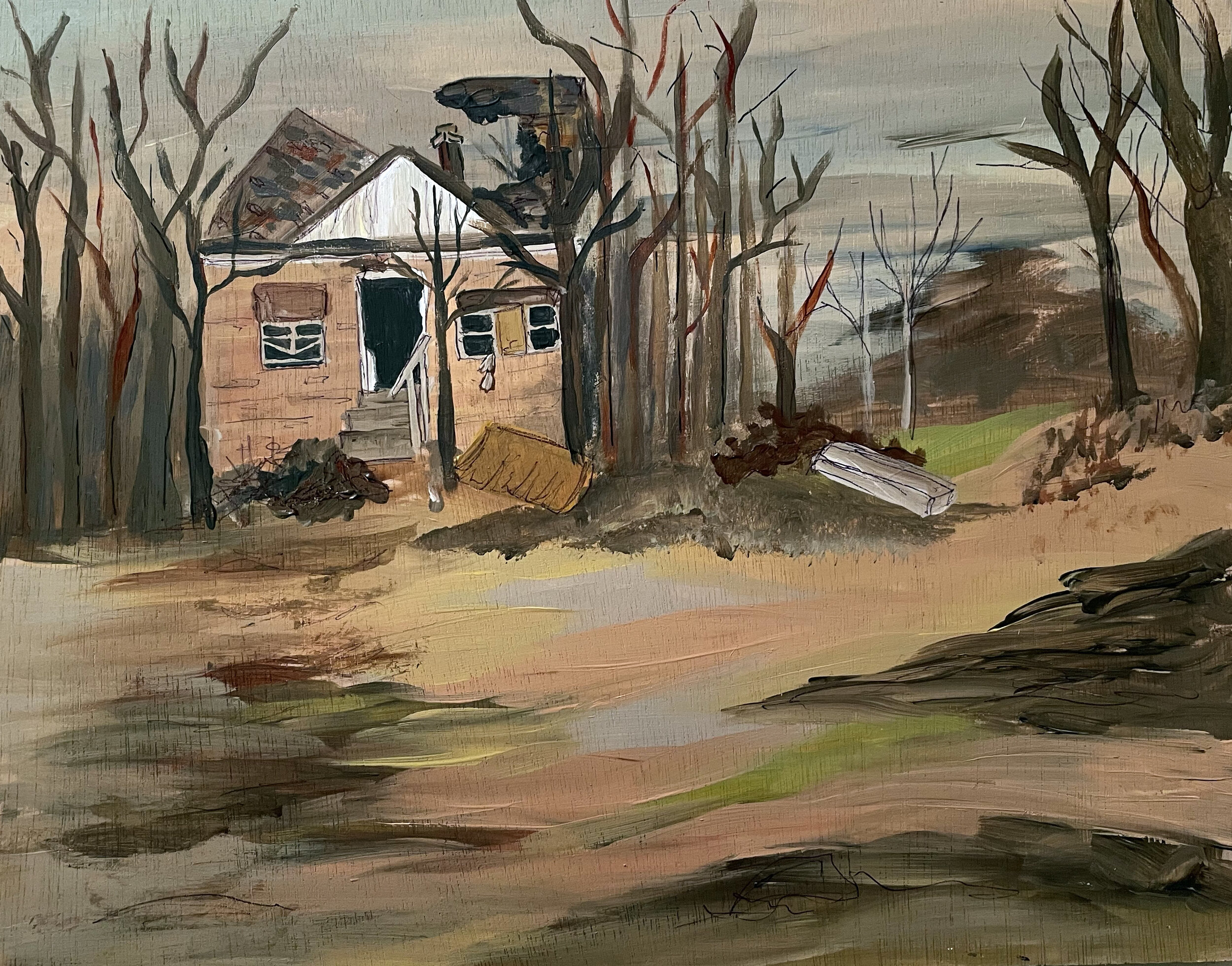
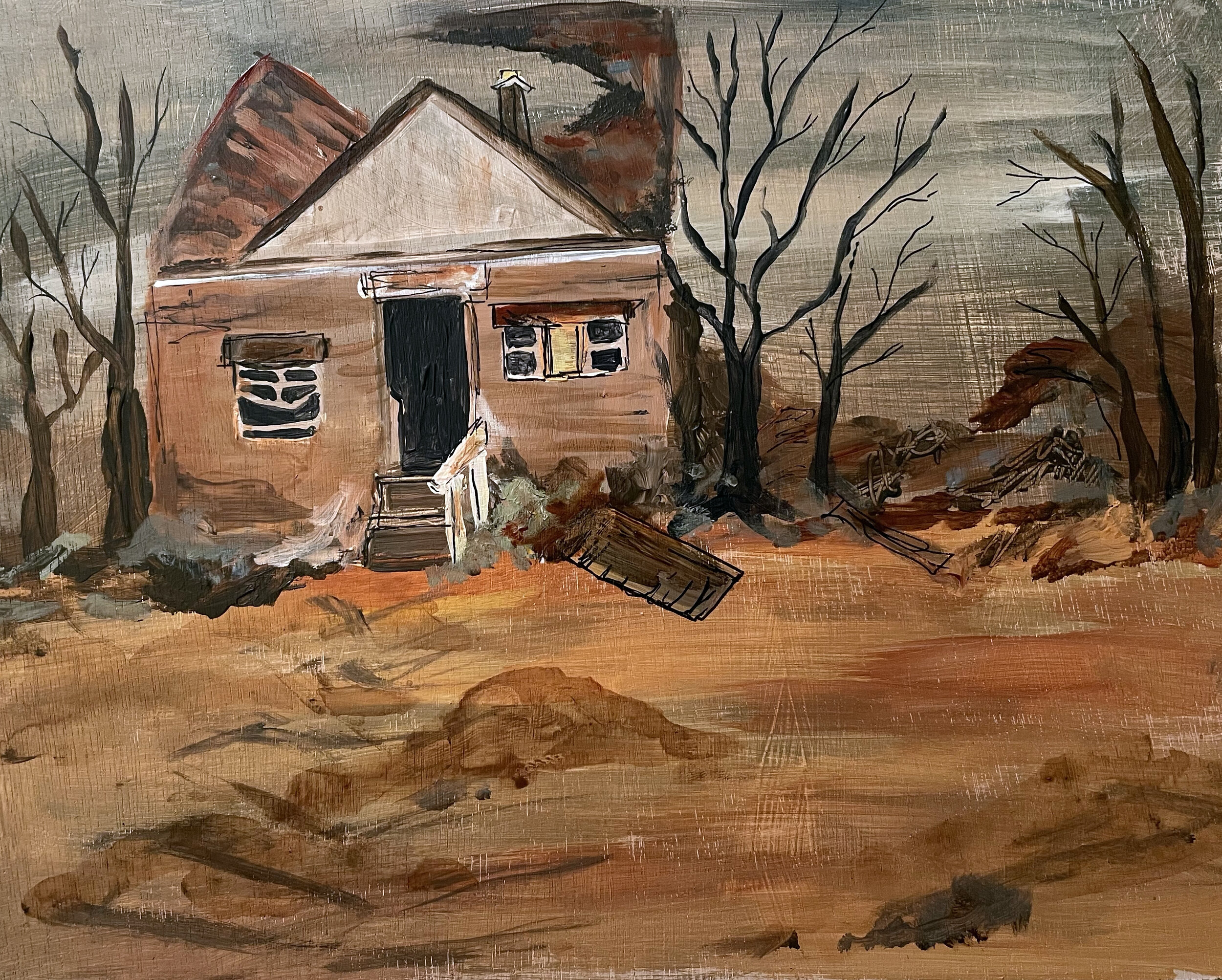
Elements of Series
Riverdale Ave, Detroit
Acrylic on Wood, Watercolor on Paper, 2021
My Irish-American father grew up in various parts of Detroit. The series of house paintings are of 15700 Riverdale Ave a few plots down from my father’s childhood home which is now an overgrown plot of grass. The roof of 15700 Riverdale Ave collapsed between October 2020 and March 2021. The property was valued at $1,000 on Oct 5, 2009. This is not the house my father grew up in. His house already flattened into the earth. Houses on Riverdale Ave were burned down by teenagers at the request of their mothers to prevent drugs from entering the neighborhood. Mothers would sit on lawn chairs, call over their teenage sons, tell them which house to burn, then call the fire department which would arrive several hours later to prevent the fires from spreading to other houses. Or so my aunt tells me. I think about how land and home enter your body and how it is passed through generations. These paintings discuss the grief of the loss of a site of memory.
Tomb Reveal
Ink and Acrylic on Fabric, 2021
The prints on fabric feature an altered image from article “Egypt reveals 59 ancient coffins found near Saqqara pyramids.” The piece discusses desecration of human bodies and disrespect towards the religious practices and meticulous choices of indigenous Northeast Africans for economic gain. Onlookers are tightly packed, wearing masks to protect themselves from the COVID-19 virus (or just following protocol) with their iPhones ready to photograph the historical moment. The mob of people gawk at the corpse from a few feet away, removing any dignity or agency of the body before them. The designs of the fabrics are a representation of how Egypt has commodified its history, its art, and its dead for the international stage. As a daughter of an Egyptian immigrant and a woman raised within and adjacent to Coptic community, I hold this grief within me. I champion the natural decomposition and death of bodies, materials and narratives.
Body
Acrylic on Wood, Plaster, 2021
My body houses the histories of Detroit neighborhoods and Egyptian grave desecration. The plaster casts act like a shell or armor while collecting skin and hair. The five casts of my side are organized as a flower like the white roses of my late grandmother Nelly’s funeral. Nelly was a sophisticated woman. In her death, it was fitting that her loved ones choose to reject all color flowers and to only have white roses. The flower petal body casts lay evenly on the ground, so the viewer can look down on the texture and shape.
I think about the threat to my ancestors of no longer being a body but an artifact that lost its humanity. My ancestors are victims of medical cannibalism and violation in death. Up until the 19th century, mummies were ground down and sold at apothecaries in Europe for medical benefits. Europeans would consume corpses that they believed possessed the power to heal their illnesses. They also used the remains of Egyptians to create pigments for paint to create the notorious shade of ‘mummy brown’. The paintings of my body are on wood, the material used to build homes and caskets. They serve as a reminder of how my body holds me and protects me as a human being, never an artifact.
